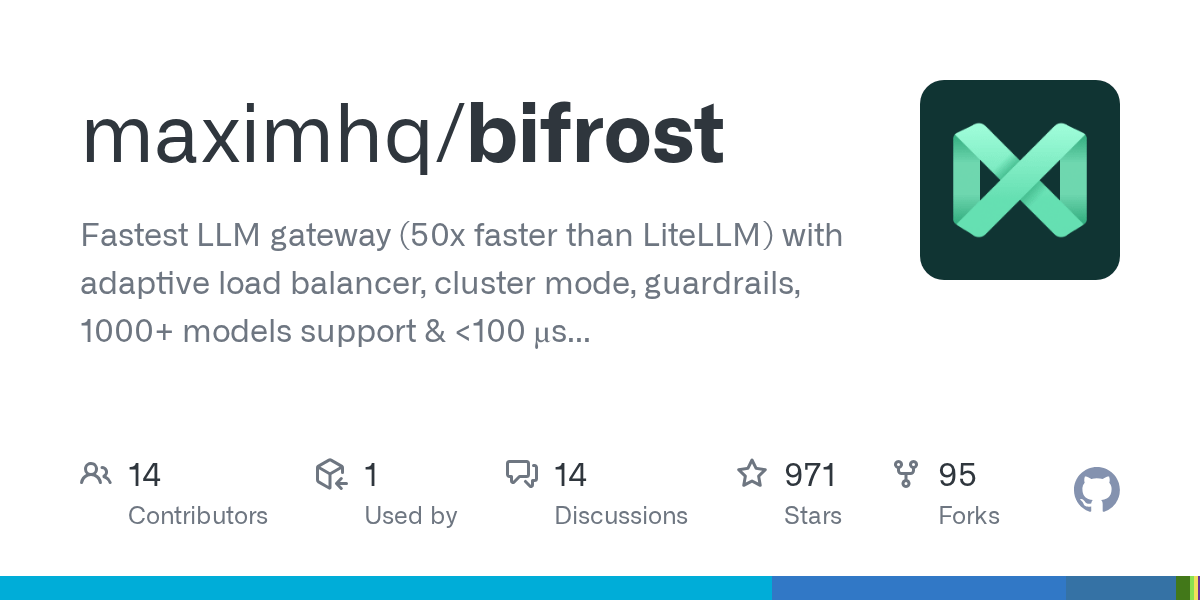
We've been working with an open-source LLM gateway called Bifrost, built to help AI agent developers manage multi-provider LLM workflows efficiently. I wanted to share some insights from using it for agentic applications.
Key features for agent developers:
- Ultra-low overhead: mean request latency of 11µs per call at 5K RPS, enabling high-throughput agent interactions without bottlenecks
- Adaptive load balancing: intelligently distributes requests across keys and providers using metrics like latency, error rates, and throughput limits, ensuring reliability under load
- Cluster mode resilience: peer-to-peer node network where node failures don’t disrupt routing or lose data; nodes synchronize periodically for consistency
- Drop-in OpenAI-compatible API: makes switching or integrating multiple models seamless
- Observability: full Prometheus metrics, distributed traces, logs, and exportable dashboards
- Multi-provider support: OpenAI, Anthropic, AWS Bedrock, Google Vertex, Azure, and more, all behind one interface
- Extensible: custom plugins, middleware, and file or Web UI configuration for complex agent pipelines
- Governance: virtual keys, hierarchical budgets, preferred routes, burst controls, and SSO
We’ve used Bifrost in multi-agent setups, and the combination of adaptive routing and cluster resilience has noticeably improved reliability for concurrent LLM calls. It also makes monitoring agent trajectories and failures much easier, especially when agents call multiple models or external tools.
Repo and docs here if you want to explore or contribute: https://github.com/maximhq/bifrost
Woulda love to know how other AI agent developers handle high-throughput multi-model routing and observability. Any strategies or tools you’ve found indispensable for scaling agent workflows?
